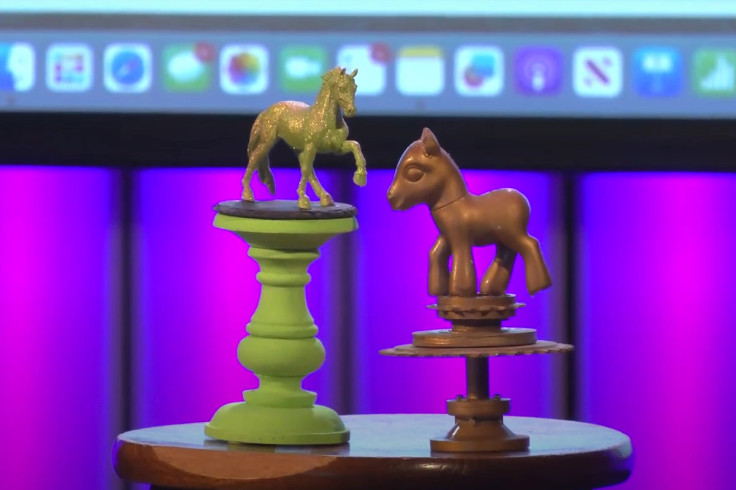Crowdstrike's President Accepting An Actual 'Most Epic Fail' Award In Person Is An Excellent Leadership Lesson
An outage caused by a software bug caused major disruption last month, affecting over 10,000 flights

In a bold and unexpected move, CrowdStrike's President, Michael Sentonas, recently accepted the "Most Epic Fail" award in person at the DEF CON cybersecurity conference in Las Vegas. This award, part of the Pwnie Awards ceremony, is typically given to those in the cybersecurity industry who have made significant blunders. CrowdStrike was recognised for a July incident where a software update led to one of the largest IT outages in history, affecting millions of devices worldwide and causing widespread disruptions.
A Catastrophic Incident
On July 19, 2024, a faulty security update deployed by CrowdStrike resulted in catastrophic consequences. The update caused the infamous "blue screen of death" on over 8.5 million Microsoft Windows devices, crippling critical operations across the globe. The outage delayed more than 10,000 flights, disrupted banking services at major financial institutions like JPMorgan and Bank of America, and impacted 911 emergency services. The financial toll of the incident is estimated to be around $5.4 billion, with Fortune 500 companies bearing the brunt of the damage.
The scale of the disruption was unprecedented, with 1.4 million travellers affected and surgeries being postponed due to the widespread impact on healthcare systems. The incident triggered a series of lawsuits, including class-action suits filed by air travellers and CrowdStrike shareholders. Delta Airlines reported to the U.S. Securities and Exchange Commission that the outage impacted 1.3 million of its customers, leading to further legal challenges.
Accepting Responsibility: A Leadership Lesson
Despite the magnitude of the failure, Michael Sentonas did something few leaders would consider—he accepted the "Most Epic Fail" award in person. The Pwnie Awards, known for their irreverent and humorous take on the cybersecurity industry's successes and failures, have never shied away from highlighting significant blunders. Past recipients of this dubious honour include industry giants like Microsoft and Twitter.
Sentonas's decision to accept the award in person was met with applause from the audience of cybersecurity professionals. "Definitely not the award to be proud of receiving," he remarked upon accepting the trophy. Sentonas acknowledged the severity of the incident and admitted, "We got this horribly wrong." His acceptance of the award was not merely symbolic; he intended to bring the trophy back to CrowdStrike's headquarters in Austin, Texas, to serve as a tangible reminder of the importance of accountability and learning from mistakes.
Accountability: The Hallmark of Effective Leadership
Sentonas's actions serve as a powerful example of leadership accountability, a concept that is crucial in today's corporate landscape. Leadership accountability refers to the responsibility that leaders take for their actions and decisions, as well as those of their team members. It is a key trait of effective leadership, as it fosters trust, respect, and confidence among employees.
Accountable leaders lead by example, demonstrating to their teams that they are willing to own up to their mistakes and take corrective actions. This behaviour encourages employees to adopt a similar mindset, creating a culture of responsibility and continuous improvement within the organisation. In the case of CrowdStrike, Sentonas's decision to publicly acknowledge the company's failure sends a clear message that the leadership is committed to transparency and learning from its errors.
The Impact of Accountability on Organisational Success

Leadership accountability has several benefits for organisations, including better compliance with company policies and regulations, improved employee morale, and enhanced trust between management and staff. When leaders hold themselves accountable, they create an environment where employees feel valued and respected, which can lead to higher levels of engagement and productivity.
Moreover, accountability in leadership helps organisations navigate crises more effectively. By taking responsibility for mistakes and working to rectify them, leaders can mitigate the impact of failures and prevent them from recurring. This proactive approach not only safeguards the organisation's reputation but also strengthens its resilience in the face of challenges.
Learning from Mistakes: A Path to Growth
One of the most important aspects of leadership accountability is the willingness to learn from mistakes. Sentonas's acceptance of the "Most Epic Fail" award is a prime example of this principle in action. Rather than shying away from the company's failure, he chose to confront it head-on, using the experience as an opportunity for growth.
Learning from mistakes involves acknowledging errors, analysing their causes, and implementing strategies to prevent them from happening again. It requires leaders to be honest about their shortcomings and to seek feedback from their teams. By doing so, they can identify areas for improvement and make the necessary changes to enhance their leadership skills and overall organisational performance.
Practical Steps for Leaders to Foster Accountability
For leaders looking to cultivate a culture of accountability within their organisations, there are several practical steps they can take:
1. Acknowledge Mistakes: Leaders should openly admit when they have made a mistake and take responsibility for the consequences. This sets a positive example for employees and encourages them to do the same.
2. Provide Support: Leaders should offer assistance to their team members, especially when they are struggling with tasks. This demonstrates a commitment to the team's success and fosters a collaborative work environment.
3. Set Clear Expectations: To ensure accountability, leaders must clearly communicate their expectations to their teams. This includes providing detailed instructions and guidelines for tasks and responsibilities.
4. Improve Attendance and Punctuality: Leading by example includes consistently showing up to work on time and being present for important meetings. This demonstrates respect for the team's time and reinforces the importance of accountability.
5. Create an Inclusive Environment: Leaders should foster a work environment that is inclusive and supportive of diverse perspectives. This encourages employees to contribute their ideas and take ownership of their work.
6. Accept Constructive Criticism: Being open to feedback is a key component of accountability. Leaders should actively seek out constructive criticism and use it to improve their performance.
7. Offer Solutions: Instead of complaining about problems, leaders should focus on finding practical solutions. This proactive approach sets a positive example for the team and helps to resolve issues more efficiently.
8. Apologise When Necessary: Offering a sincere apology when mistakes are made shows that the leader is taking responsibility for their actions. This can help to rebuild trust and maintain strong relationships with employees.
9. Involve Employees in Goal Setting: By involving employees in the goal-setting process, leaders can ensure that the goals are realistic and achievable. This increases the likelihood of success and motivates employees to work towards common objectives.
10. Follow Company Policies: Adhering to company policies and procedures is essential for maintaining accountability. Leaders should ensure that they are following all relevant guidelines and encourage their team members to do the same.
Michael Sentonas's decision to accept the "Most Epic Fail" award in person at the DEF CON conference serves as a reminder of the importance of leadership accountability. By acknowledging the company's mistake and using it as a learning opportunity, Sentonas demonstrated the qualities of an effective leader—honesty, transparency, and a commitment to continuous improvement.
© Copyright IBTimes 2025. All rights reserved.






















